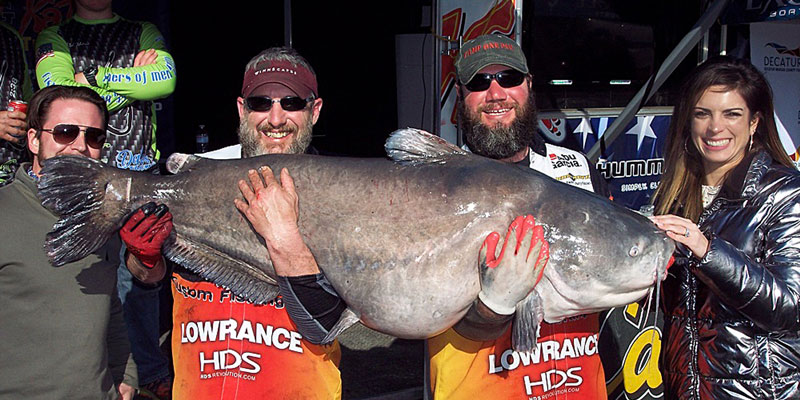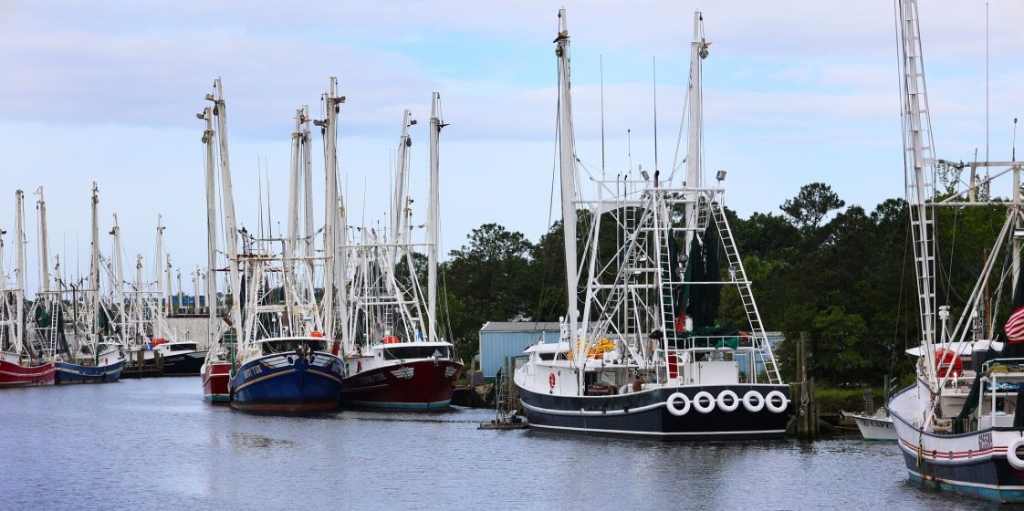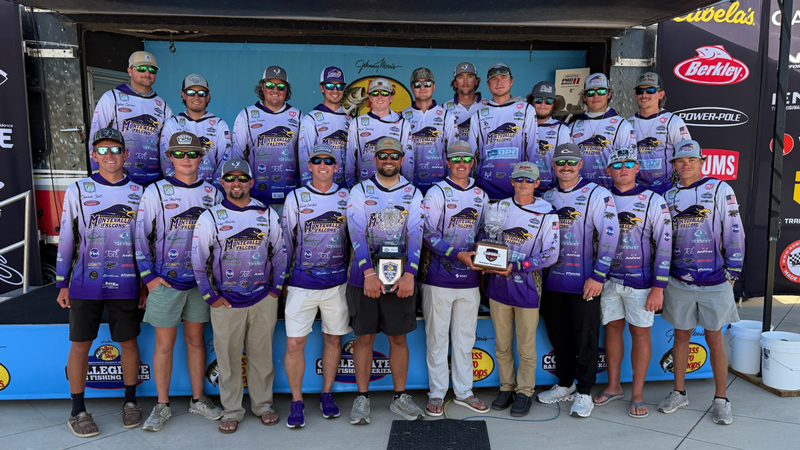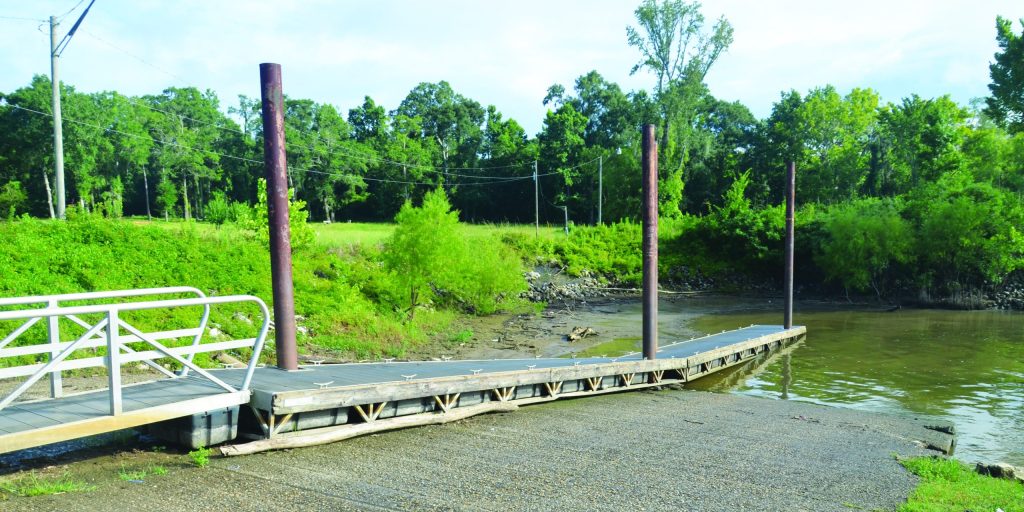Thankfully, the late-winter deluges have transitioned into a spring dry pattern that has allowed the flooded rivers in many portions of Alabama to return to more normal levels.
Earlier this year, the Tennessee River system in Alabama was at its highest levels in about three decades, which made it difficult on anglers who normally enjoy a fishing bonanza in February and early March.
Jimmy Mason, a fishing guide and professional bass tournament angler from Rogersville, said the river levels are starting to get back to normal after some epic high water in February.
“I was on Wilson the other day and they actually shut the spillways off for the first time since the second week of February,” Mason said. “On Pickwick, we had the most current ever, and it was the second-highest level ever. The only time it was higher was in 1897.”
According to a Tennessee Valley Authority (TVA) document, the greatest flood on record in the lower Tennessee Valley occurred after 21 straight days of rain in 1897.
Mason feared a repeat of the historic rainfall when between 12 and 13 inches of rain fell in north Alabama in late February. Anglers were basically shut out of normal fishing patterns during one of the most productive times on the Tennessee River lakes of (east to west) Guntersville, Wheeler, Wilson and Pickwick. The other rivers in Alabama, like the Coosa and Tombigbee, were not spared from high water and the resulting damage to boat ramps and other facilities. Weiss Lake and Logan Martin Lake on the Coosa sustained damage to campgrounds and boat ramps. The Tombigbee reached its highest level in 28 years.
Conservation Commissioner Chris Blankenship said the Alabama Wildlife and Freshwater Fisheries Division is currently traveling statewide to determine how much damage was done by the high water.
“Significant damage from the floods occurred to the ramps on Weiss Lake and really all over the state,” Blankenship said. “Our staff has been out assessing the damage and trying to make emergency repairs where possible and will be bidding out repairs as soon as we can.”
Mason said the high water impacted Pickwick the most on the Tennessee River.
“Tuesday was the first day that McFarland Harbor boat ramp was open since early February,” Mason said. “It was underwater for several weeks, so everything electrical will have to be replaced. It damaged a lot of the roads and concrete pads. It will take a while to get everything cleaned up and repaired. It’s the same for all the chain, but Pickwick was the one with the most damage.”
Because of the swift current, Mason had to reschedule many booked trips because of the safety factor. When he was able to safely get back out, his fishing strategy was totally different.
“There was so much current that everything changed,” he said. “The current was so strong that the fish couldn’t hold in it. They had to find places to get out of the current, and we had to adapt to that. Basically, we were looking for the biggest eddies because there was so much current. Even the creeks had a lot of current. Traditionally, there’s a lot of offshore fishing for staging pre-spawn fish. This year, the fish were all on the banks because they couldn’t handle so much current. I had to switch to a lot heavier weights to get the bait down. I had to go to one-ounce and ounce-and-a-quarter jig heads. It was all about figuring out ways to play the current.”
Mason said anglers will likely have to be flexible in the coming weeks and figure out what the bass are doing in terms of spawning activity. Water temperatures are hovering around the 60-degree mark. Spawning activity usually starts when the water temperature hits the 62- to 63-degree mark.
“The next week or so is going to be interesting,” he said. “It could be that the pre-spawn fish will be biting, or those fish could go straight to the beds. We will have to prepare for both scenarios. We caught a couple the other day with eggs oozing out of them. It may be that the spawning is more of the deal than the pre-spawn feed. I heard someone say this may be a lost year for the pre-spawn bite. If we have a warm-up in the next week, I think there is just going to be a giant wave of bass that get on the bed at one time.”
Mason said the crappie fishermen have suffered a similar fate because of the high water.
“Normally, this time of year you see the crappie fishermen on the brush tops offshore,” he said. “This year, I haven’t seen hardly any crappie fishermen. About all I’ve seen are the guys with the bigger catfishing boats. Now, those guys are catching some good fish.”
In fact, at the Cabela’s King Kat Tournament on Lake Wheeler recently, a monster blue catfish hit the scales at 114.96 pounds, the largest fish ever weighed in that tournament series.
Mason is optimistic that fishing for the rest of spring will return to a normal pattern, but he will never forget how high the water got in February.
“At one point, they were releasing 550,000 cfs (cubic feet per second) through the dam,” he said of Pickwick. “That’s just unbelievable. One of the older fishermen said it got up to 500,000 in 1990. Since 1990, the highest it’s been was 325,000.”
On the other end of Alabama’s Tennessee River chain, Mike Carter guides on Guntersville Lake, a sprawling 67,900-acre impoundment that is perennially rated as one of the top bass lakes in the nation.
Carter said during the worst of the high-water period that the mid-lake area at Guntersville was up between 2 and 3 feet and up more than 3 feet upriver, which is the highest he’s seen it since 1990.
“Back then we were catching fish in people’s pastures and up in the woods,” Carter said. “The fish were schooling in the pastures because of all the food that was in there. I didn’t go into the pastures this time because I didn’t want to go through the woods to get there. Guntersville can hold a lot of water, but it was tough during that time. We had to move up shallow. Instead of the fish being on the outside of the grass lines, they were between the bank and the grass line. We still caught some good fish on chatterbaits and square-bill crankbaits. I fished a lot of primrose that I normally can’t fish, but the water was so high I was able to catch a lot of fish around the primrose.”
Carter expects the bass spawning activity to be wide open in the next few days with water temps approaching the magical low 60s mark.
“I found several beds this weekend,” he said. “Fish are moving up into 2 and 3 feet of water to spawn. We saw beds and some buck bass cruising around. They’re getting ready to do their thing. We finally got some good sunshine weather to move them up there.”
Carter expects the spawning activity to last through April because Guntersville’s bass usually move up in stages.
After the fish spawn, they move to the river ledges and will be looking for something to eat.
“When the fish get out on those ledges, they will gorge heavily,” Carter said. “We’ll use a lot of swimbaits and, on calmer days, jigs. We’re looking for deep shell beds. They’re a lot easier to pattern at that time, and we catch some good fish.”
Guntersville is known for its abundant grass with hydrilla mats and abundant Eurasian watermilfoil. Carter is somewhat worried high water may have altered the grass dynamic.
“The high water and heavy current cleaned out a lot of the grass,” he said. “I think a flushing every once in a while helps, but I’m afraid that it’s going to allow the eel grass (tape grass) to take over. Milfoil and hydrilla provide a lot of filtration, and they hold more oxygen than eel grass. Eel grass will smother out milfoil and hydrilla. I hope that doesn’t happen.”
David Rainer is an award-winning writer who has covered Alabama’s great outdoors for 25 years. The former outdoors editor at the Mobile Press-Register, he writes for Outdoor Alabama, the website of the Alabama Department of Conservation and Natural Resources.













